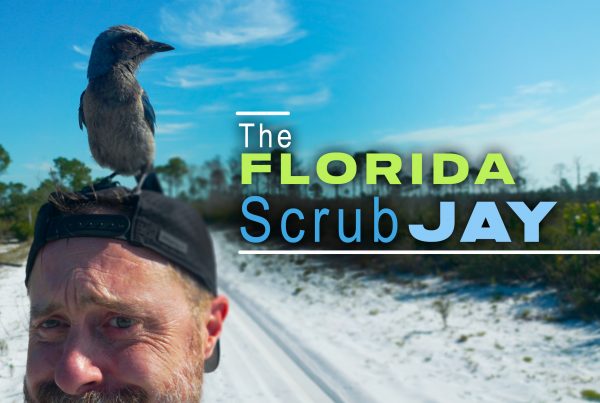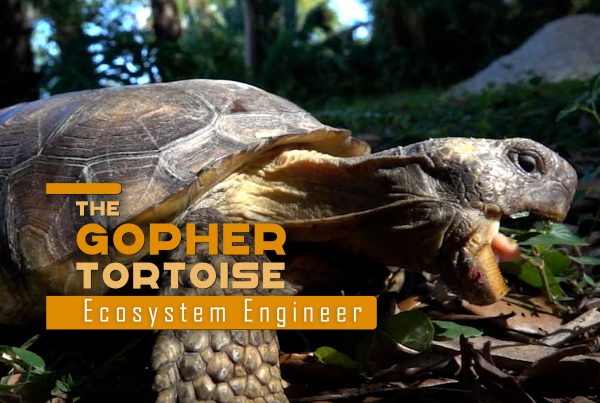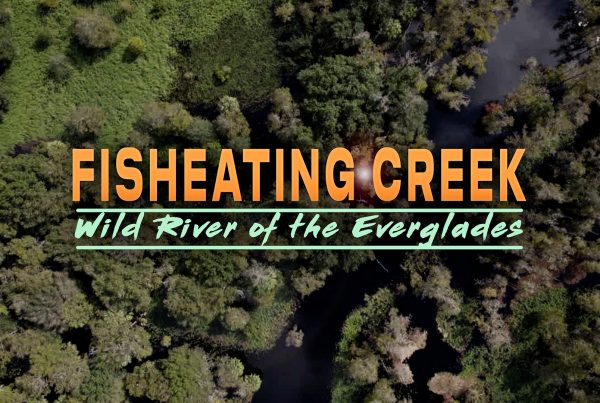You might say the Everglades are a vast, stagnant swamp, full of slithering reptiles and stinging insects. But did you know they are considered to be an incredibly wide, slow-moving river? Crazy huh?
Much of the water that covers the Everglades comes from rainfall far North in Central Florida. Talk about ways in which humans try to control the movement of water. What are some resulting environmental effects we often see?
The Everglades change drastically from wet season to dry season. During the winter months, the watery prairies dry up. Water is usually only found in deeper pockets like sloughs, ponds and cypress domes. What do you think happens to all of the fish, birds and other animals that rely on water?
The water from the Everglades eventually finds its way into Florida Bay and Biscayne Bay. That water is full of nutrients from the Everglades. Unfortunately, pollutants from the cities and agricultural areas bordering the Everglades also find their way into the Everglades. Talk about the effects these pollutants can have on the Everglades, the bays, and the ocean beyond. How are they all linked?
The Everglades: River of Grass
“When you think of the Everglades, you probably think of a vast, untamed wilderness filled with stagnant swampland, slithering reptiles and stinging insects.
For the most part, this is a good description. Covering about 1.5 million acres, the Everglades is enormous. The watery landscapes teem with critters. Reptiles and insects are plentiful, as well as millions of fish, birds and other wildlife.
The subtropical wetlands that define the Everglades bioregion, however, are anything but stagnant. In fact, most people would be surprised to learn that the Everglades is considered to be an immense, slow-moving river!”
The Everglades is an incredibly unique ecosystem full of toothy sawgrass and nurtured by a slow-moving river 40 miles wide and over 100 miles long. Sadly, a century of human population growth and development has taken a major toll on the River of Grass. Today we are dealing with the effects of an altered, unnatural system, but more on that in a minute.
To understand how the River of Grass should work, we need to head way north, to the Kissimmee River. During the rainy season, rainfall in the higher, central part of Florida fills a chain of lakes just south of Orlando. These Lakes feed into the Kissimmee River, which flows south, dumping into the great Lake Okeechobee.
In its natural state, Lake Okeechobee would brim over during the rainy season, spilling the excess water over its southern rim.
From an airplane or satellite image, we can see how this southward “sheet-flow” of water has shaped the hammock islands that dot the Everglades into a flowing pattern of tear-drop shapes.
The Everglades is dominated by watery prairies and saw-grass marsh, about ankle to knee deep during the rainy season. Here and there we see tree islands on high ground, cypress domes in deeper areas, and ponds or sloughs where the water is deepest.
As it nears its final destination, the Everglades becomes a maze of mangrove estuaries. The water here should be brackish, or a mixture of salt water from the sea and fresh water from the land. At last, the Everglades dumps its contents into Florida Bay and the Gulf of Mexico. And this is where the long journey ends for the Everglades, River of Grass.
“At least this is how it’s supposed to work, but as I mentioned earlier, the Everglades has been tampered with. Water, its life blood, no longer flows the way it should and the River of Grass is dying of thirst.”
This spells catastrophe for a place like Florida Bay which is naturally a brackish estuary, a nursery ground for fish and home to the largest meadows of seagrass in the world. Today, during periods of drought, Florida Bay can actually become saltier than the sea. This is exactly what happened in the summer of 2015, sending the system into shock and killing more than 50,000 acres of seagrass. What’s next? Algae blooms, dead fish, and a fishing industry in crisis.
No more than 8 months later, Florida experienced an unusually rainy winter. Lake Okeechobee filled to dangerously high levels and billions of gallons of nutrient rich water were dumped out to sea. This water didn’t flow and filter through the River of Grass as it did for eons of time, instead it was pumped out of Lake Okeechobee through two huge man-made canals – one flowing west to the Caloosahatchee River, and the other flowing east into the St. Lucie River and the Indian River Lagoon estuary.
Billions of gallons of polluted lake water poured into the brackish estuaries of the east and west coasts for weeks, altering salinity patterns and killing critical nursery habitats like seagrass meadows and oyster reefs. By the summer, conditions became disastrous. Fueled by excessive nitrogen and phosphorus levels, a 200 square mile bloom of toxic blue-green algae appeared on the surface of Lake Okeechobee. Transported by the torrent of water being dumped out of the lake, this algae bloom made its way to the St. Lucie River and Indian River Lagoon estuary, coating the shorelines in a thick layer of toxic green slime. The result? An environmental and catastrophe.
“So why is the plumbing all messed up? Well, over 100 years ago an effort began to drain the water from the Everglades.” Today a vast network of canals, pumps and locks are used to divert water away from the Glades, leaving behind a huge area of dry, fertile ground perfect for growing crops like sugar cane all year. The Everglades Agricultural area, or EAA as it is called, sits on what used to be the marshy beginning of the River of Grass.
“You’ll remember that historically, Lake Okeechobee would overflow is southern rim, right where the Everglades Agricultural area is now, giving birth to the River of Grass. This stopped in the early 1900’s with the construction of an earthen dike, later replaced by a massive wall that almost completely surrounds the lake.” The Herbert Hoover dike is important for flood control. It protects thousands of residents in surrounding towns from deadly storm surges. Unfortunately, however, it cuts off the main water supply to the River of Grass.
Through Everglades restoration, freshwater flow can be restored to the River of Grass. This would relieve pressure from a dammed and swollen Lake Okeechobee, removing the need to pump that polluted water out to sea and saving important estuaries like the St. Lucie River and Indian River Lagoon.
“The Everglades is a shadow of what it used to be, but it’s incredibly important to us. The River of Grass re-charges our aquifer, providing fresh water to more than 4 million people. It is also important to our economy, attracting over 1 million tourists each year and supporting a billion-dollar recreational fishing industry. These are just a few reasons why Everglades restoration needs to happen.”




